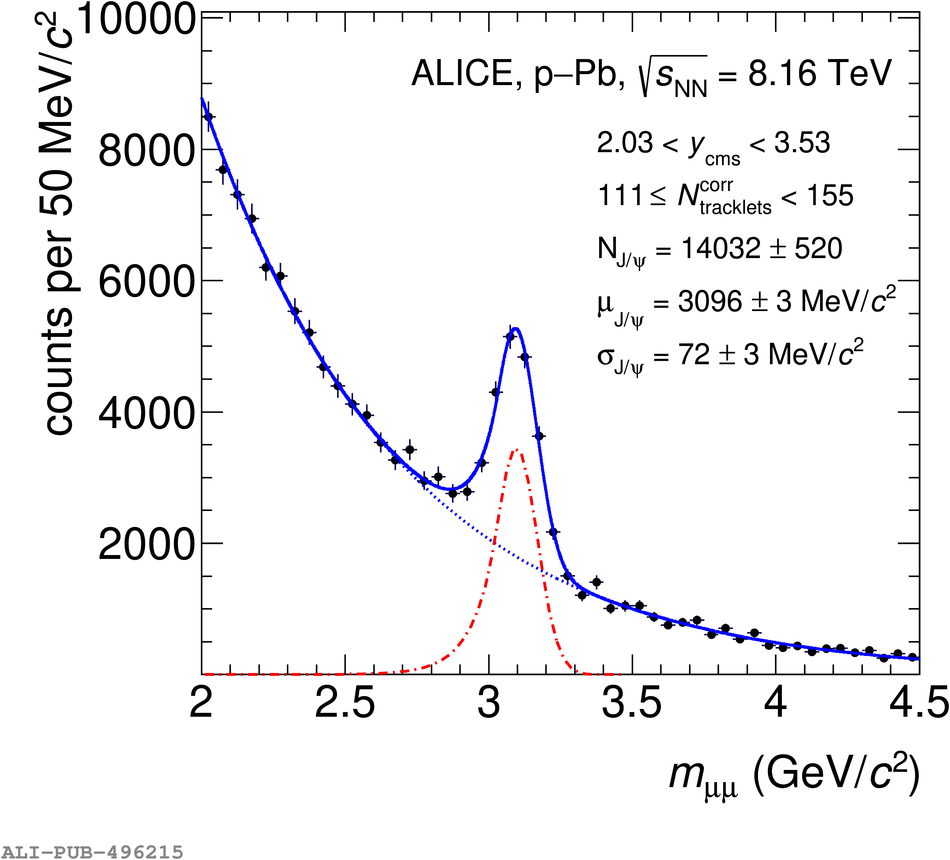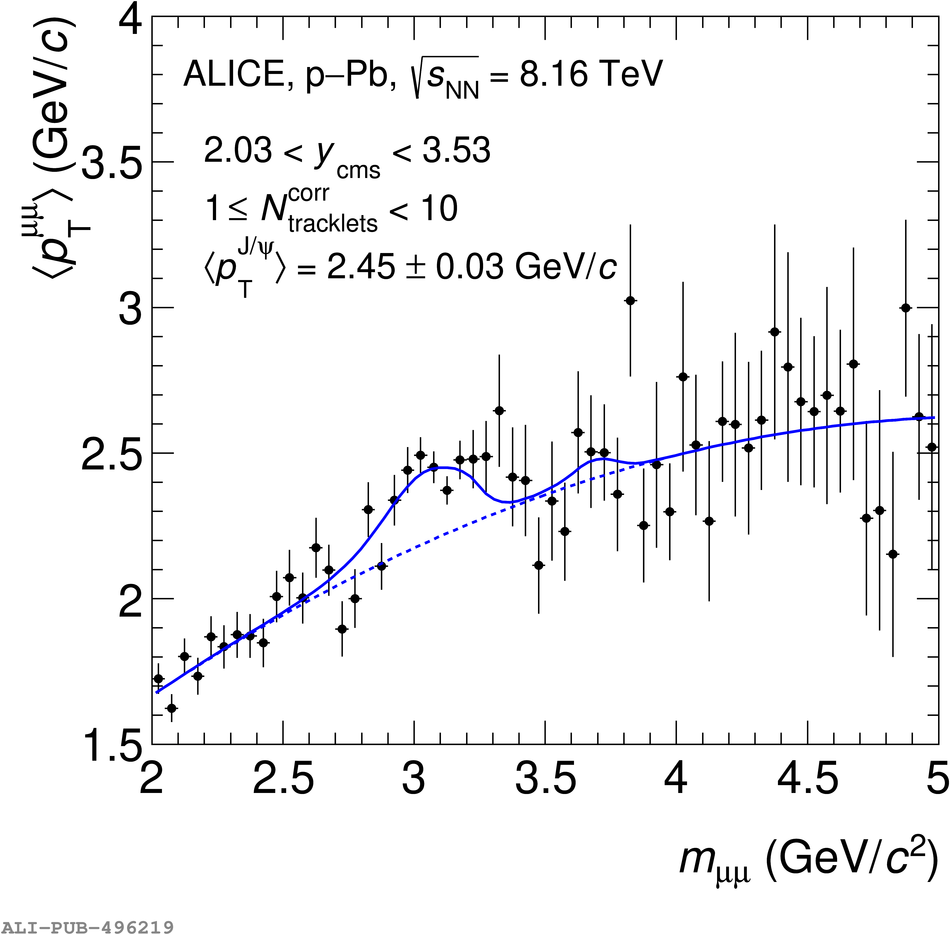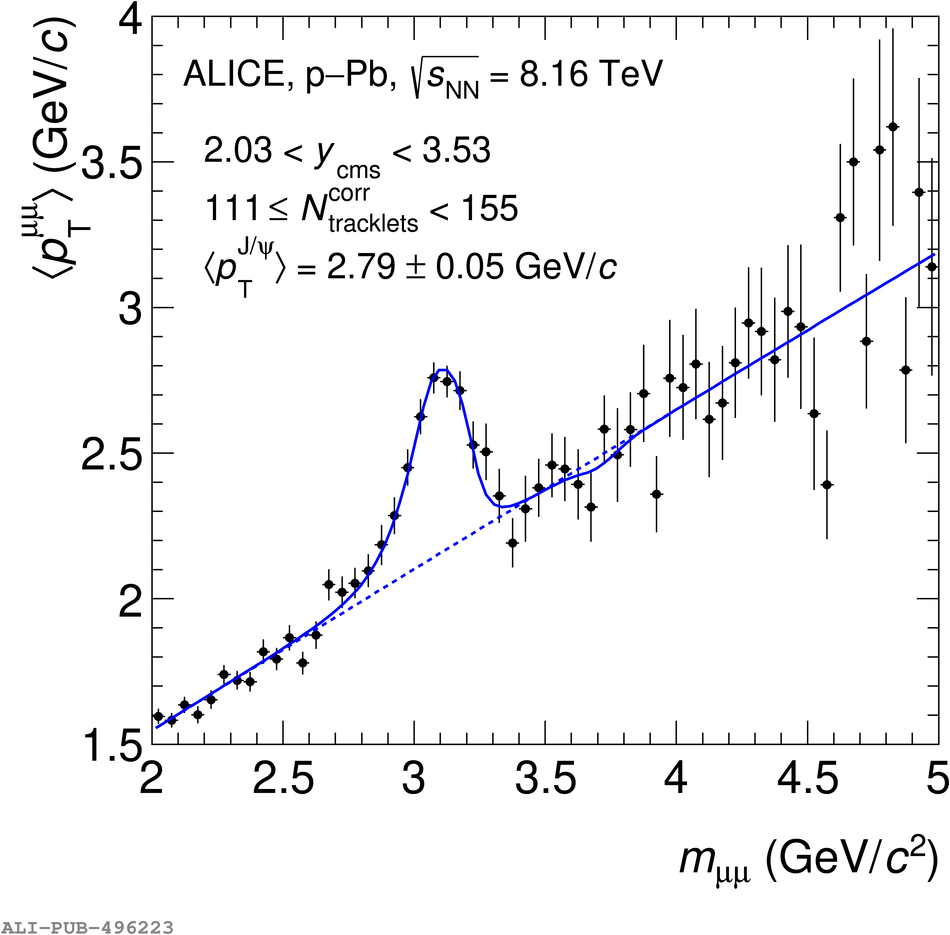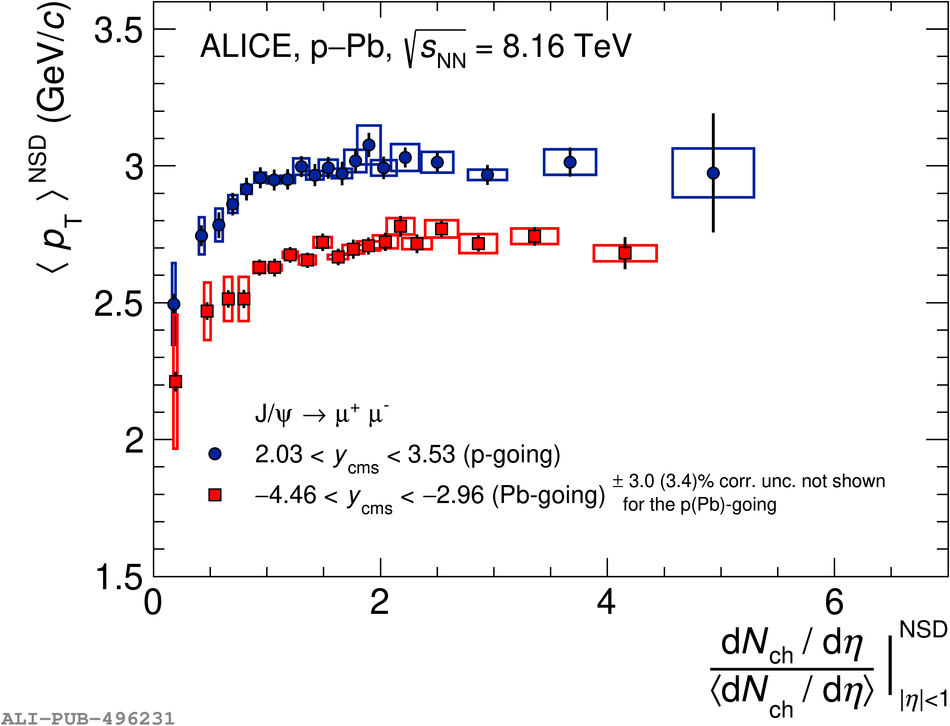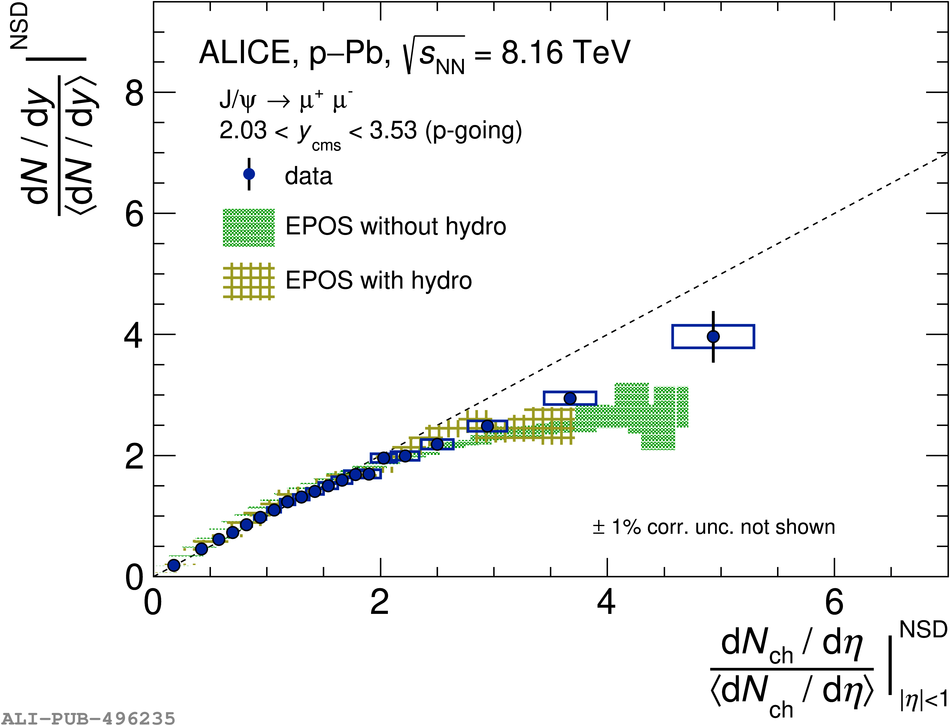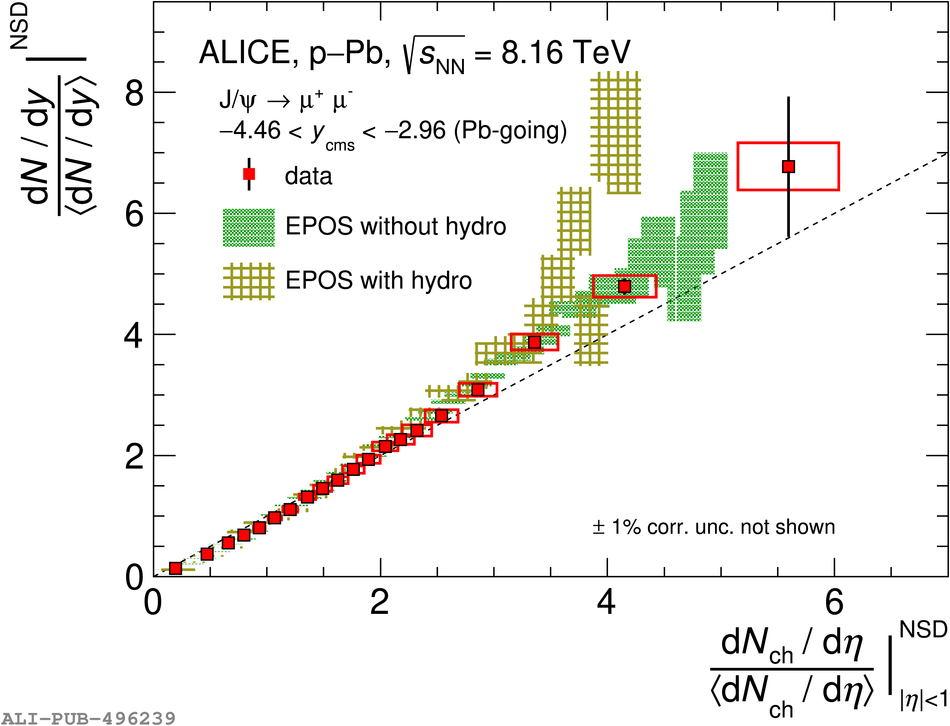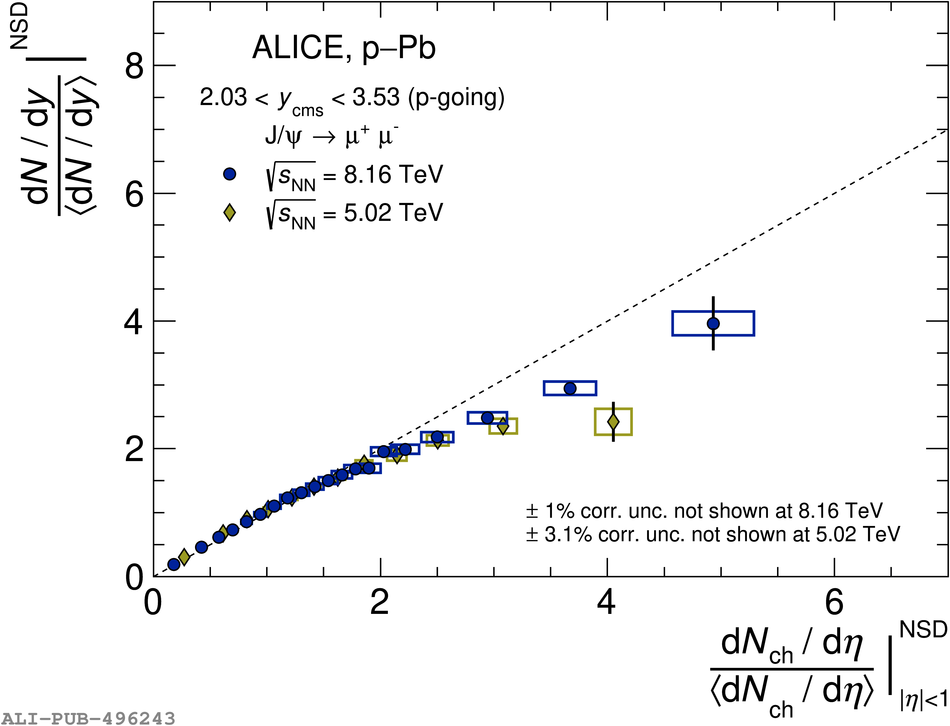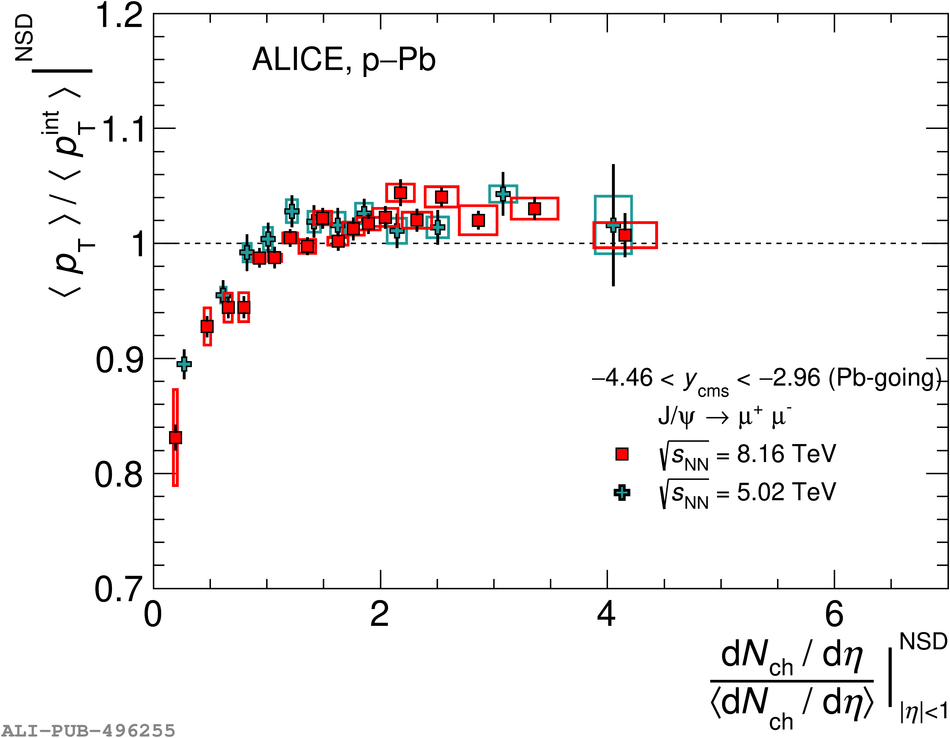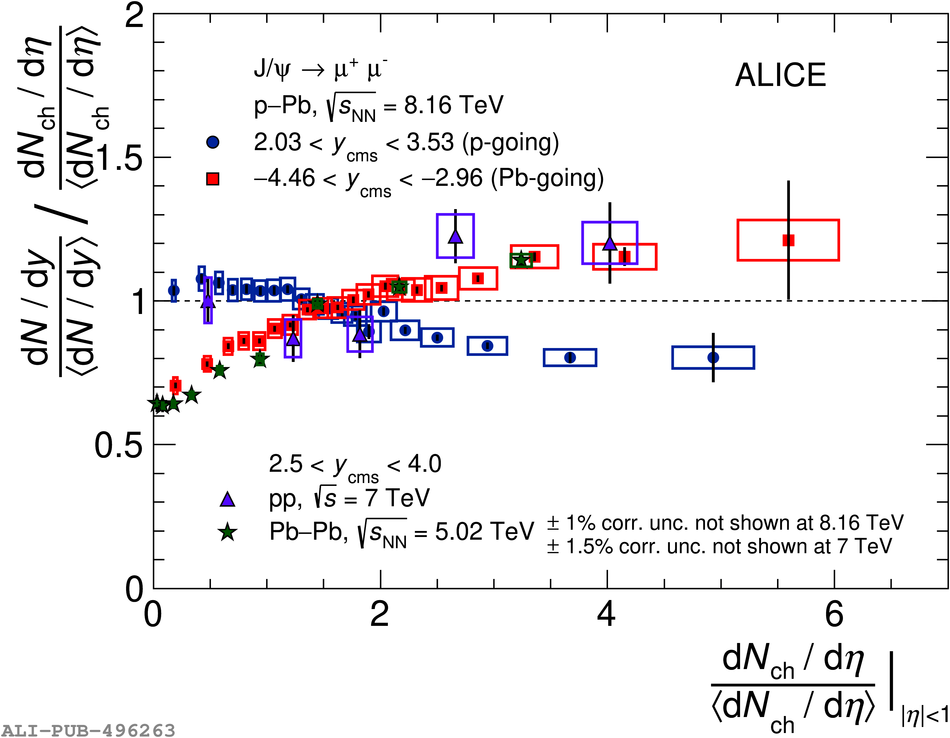Inclusive J/$\psi$ yields and average transverse momenta in p-Pb collisions at a center-of-mass energy per nucleon pair $\sqrt{s_{\rm NN}}$ = 8.16 TeV are measured as a function of the charged-particle pseudorapidity density with ALICE. The J/$\psi$ mesons are reconstructed at forward $(2.03 <~ y_{\rm cms} <~ 3.53)$ and backward ($-4.46 <~ y_{\rm cms} <~ -2.96$) center-of-mass rapidity in their dimuon decay channel while the charged-particle pseudorapidity density is measured around midrapidity. The J/$\psi$ yields at forward and backward rapidity normalized to their respective average values increase with the normalized charged-particle pseudorapidity density, the former showing a weaker increase than the latter. The normalized average transverse momenta at forward and backward rapidity manifest a steady increase from low to high charged-particle pseudorapidity density with a saturation beyond the average value.
JHEP 2009 (2020) 162
HEP Data
e-Print: arXiv:2004.12673 | PDF | inSPIRE
CERN-EP-2020-058



